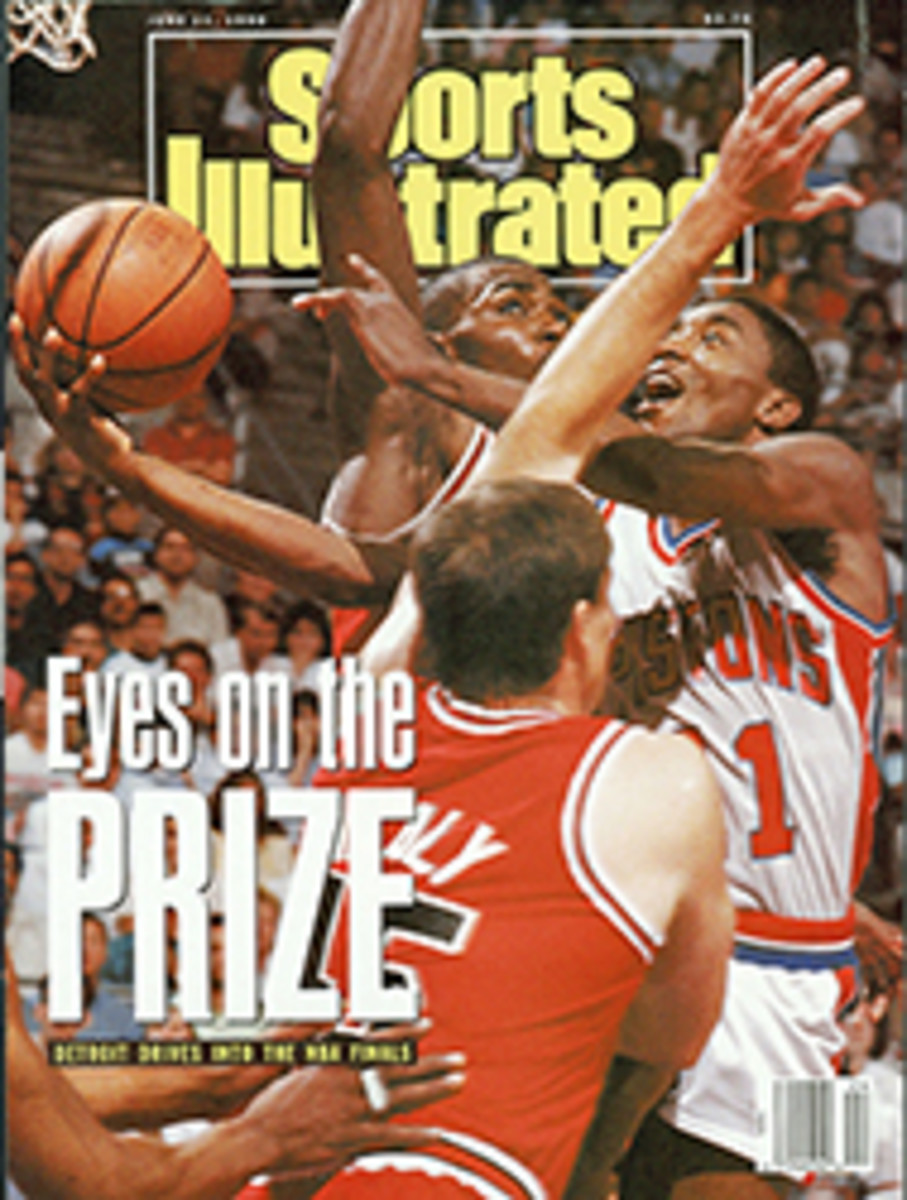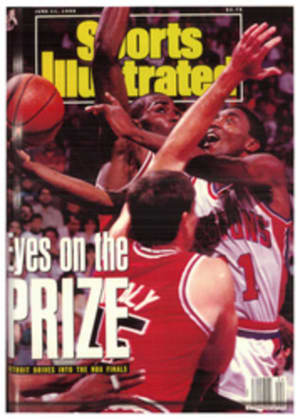
MAKE ROOM FOR THE ZOOMIES
In the unlikely setting of Pebble Beach, Calif., the "Rose Bowl of Rugby" became a shoot-out between the Army and the Air Force. The national collegiate championship match between the service academies was part of the 32nd annual Pebble Beach Rugby Classic, a May jamboree that annually attracts the nation's top college and club teams to this otherwise peaceful and prosperous settlement on the shores of the blue Pacific. Rugby's image is one of blood, mud, beer and grime, and the scrappy lads from the Air Force Academy outlasted their West Point rivals 18-12 in a stirring match that had its portions of blood and, later, beer, if no mud or grime.
It was the second straight collegiate title for Air Force, and as the team's All-America center, Tim Bohman, bellowed afterward, "Nothing—nothing—beats repeating!" Bohman had much to do with that singular achievement. He scored two decisive tries (running the ball across the goal for four points) against the Cadets and had 17 more points in the semifinals to lead all final four scorers with 25 points. More than that, Bohman's superb ball handling kept Army off balance much of the afternoon. "We moved him from outside center to fly half so he could handle the ball more," says Air Force coach Lieutenant Colonel Vera Francis.
That was only fitting, because Bohman was a wishbone quarterback, football's rugby position, in high school at Hortonville, Wis. He was a running back as a freshman at the Air Force Academy, but football, he says, was too much like work. "I'd never seen a rugby ball until junior year," says Bohman, a senior. "But now I love the game. Rugby is more fun than football both on and off the field. I've never known such camaraderie."
The service academies lent a proper military air to an occasion that, in the honorable tradition of rugby the world over, is better known for a haphazard mixture of good times and serious sport. In fact, rugby and Pebble Beach have coexisted on magnificent Seventeen Mile Drive for 20 years (the tournament bounced around from one site on the Monterey Peninsula to another during its first dozen years). Golf, as in Crosby or, most recently, AT&T, is the Pebble Beach game. When it isn't, car, dog or horse shows are.
The intrusion of 800 or so fun-loving ruggers and their assorted followers has not always set well with the stuffier elements of a community favored with considerable wealth and unsurpassed scenery. Steve Yost, the tournament's director for 24 years and now its historian, says that in the mid-'70s, at least, the hosts had some cause for wariness. "Some of our people were not behaving well back then," says Yost. "For one thing, we didn't have enough toilets."
However, if the 32nd renewal of the Classic is at all typical, the behavior of both fans and participants has turned impeccable. It was a party, sure—beautiful young people frolicking in the sun—but a tasteful one. Still, representatives of the Pebble Beach Company, the realty holding company that oversees the entire Pebble Beach complex, suggested to the Monterey Herald that unless the tournament sponsors—the Monterey Jaycees and the Northern California Rugby Football Union—attract some first-rate international sides to the Classic, the company may well withhold its polo fields as a site.
That attitude rankles rugby's traditionally fierce defenders. Who says ruggers aren't tony enough for Pebble Beach? "Ninety percent of all rugby players are college educated," says Ed Hagerty, the editor in chief of Rugby Magazine. "And 50 percent of them can afford houses here. They simply choose to play our game, not golf. After all, rugby got its start in an English public [private] school."
The incipient class struggle does not faze the tournament's founder, Paul (Boomer) Andrew, the owner of a San Francisco-based hotel and property-management company, who was a defensive end and rugby prop at Cal in the early 1950s. Andrew, who has a vacation home in nearby Carmel, says he's grateful to the Pebble Beach folks for hosting his tournament these past two decades and promises he'll do whatever is reasonable to accommodate them. His sentiments are pretty much shared by the USA Rugby Football Union, the sport's national governing body. Bob Watkins, president of the union, has even contacted representatives from Scotland, Japan and Western Samoa in hopes of setting up an international match at Pebble Beach next spring. In the meantime, the Classic remains Boomer's baby.
Andrew was playing rugby for San Francisco's Olympic Club in 1959 when it occurred to him that the country was probably ready for a major tournament. "There were only nine teams in California and maybe 25 nationwide," he recalls. "I was getting tired of playing the same teams week after week. I think we played the Peninsula Athletic Club four times that year. Too much. Besides, they played dirty. We needed some variety."
Telephone calls to rugby enthusiasts around the nation confirmed Andrew's suspicion that other players shared his passion for diversified competition. He was also certain that the game was on the verge of popularity in the U.S. He picked the Monterey Peninsula as the site for his first invitational because of the financial success of the Monterey Jazz Festival the year before.
The 1959 kickoff tournament, won by a Canadian club team, was scarcely a financial bonanza, but it did capture the imagination of the burgeoning rugby community. It also attracted some needed publicity with the appearance of Commander Whitehead, now a trivia game question but then at the pinnacle of his celebrity as a television purveyor of Schweppes tonic water—as in "Schweppervescence." Boomer's Olympic Club team won the second tournament and Stanford the third, the university's first of eight Pebble Beach championships in the '60s and '70s.
Stanford's victories were, of course, in the club category. Not until 1980 did the colleges, under the aegis of USA Rugby, organize their own championship. The Pebble Beach Classic became the site of the collegiate final four in '84, and, with the exception of the 1989 championship, it has been held there ever since. With the college title on the line and 32 other teams competing for the club championship, the Pebble Beach extravaganza must now be considered the nation's premier rugby event. Boomer was right. Rugby, albeit slowly, was growing. Today 1,311 clubs and 392 colleges field sides.
The colleges returned to Pebble this year after last year's sojourn at the Air Force Academy's home turf in Colorado Springs, where the Zoomies, as the Falcon players call themselves, won the national crown by beating Army 17-16 in the semifinals and Long Beach State 25-7 in the championship game. The Cadets reversed their final four loss to the Zoomies last November with a 16-14 regular-season win. The two teams met once again in Pebble Beach after both had defeated formidable semifinal opponents. Army eliminated Long Beach State, the Pacific Coast regional champion, which had entered the Classic with a record of 31-1, while Air Force squeaked by Ohio State 37-32.
The academy teams were understandably proud to be playing each other for the championship. So proud, said Army coach Lieutenant Colonel Mike Mahan, standing on the pitch as a white fog crept through the stately Monterey pines, that "we'd be happy to play Air Force not just in this beautiful place but in Nome, Alaska"—a possibility, unless Boomer's boys come through.
Mahan's enthusiasm was scarcely dampened by his team's defeat. "These young men just wouldn't give up," he said. "This is a rivalry built on comradeship. There are no losers in a game like this."
PHOTO
V.J. LOVERO
Bohman, the guy in wild blue yonder, scored 25 points for the Force in the final two games.
PHOTO
V.J. LOVERO
If Boomer can't draw international sides, he may lose the polo fields.
PHOTO
V.J. LOVERO
Army played with headlong zeal but fell a little short in the final.

